A Great American Conservationist: Remembering Teddy Roosevelt
A “Bully” Conservationist
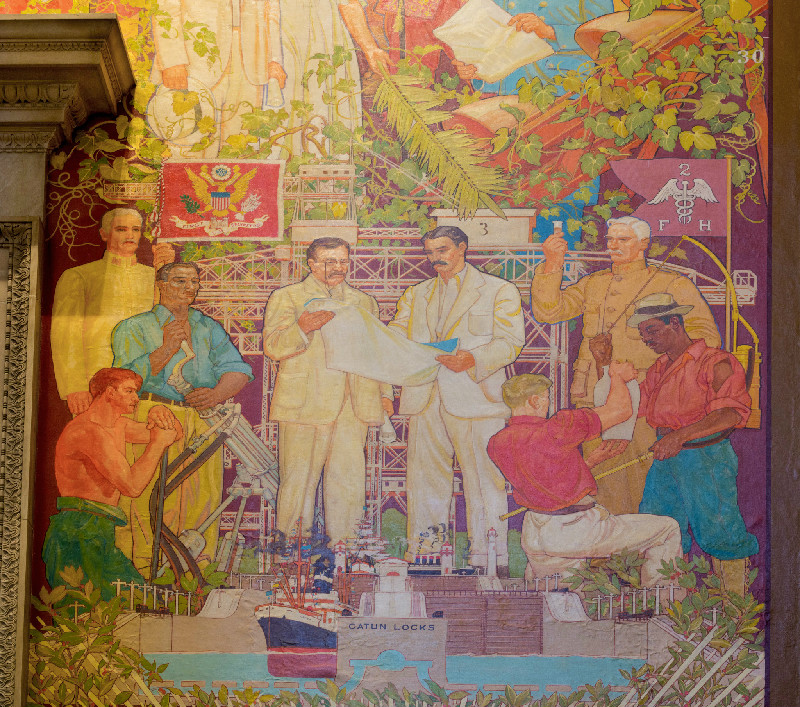
U.S. President Theodore Roosevelt, a hunter and naturalist, played a crucial role in the conservation movement in this country. A restored and updated memorial to the 26th president was unveiled today (Oct. 25) at the American Museum of Natural History, an institution with which he had a long-standing association. Above, a mural in the museum’s Theodore Roosevelt Rotunda depicts the building of the Panama Canal, which he championed as president. In Roosevelt’s time “bully” meant “first rate”.
Updating a Memorial
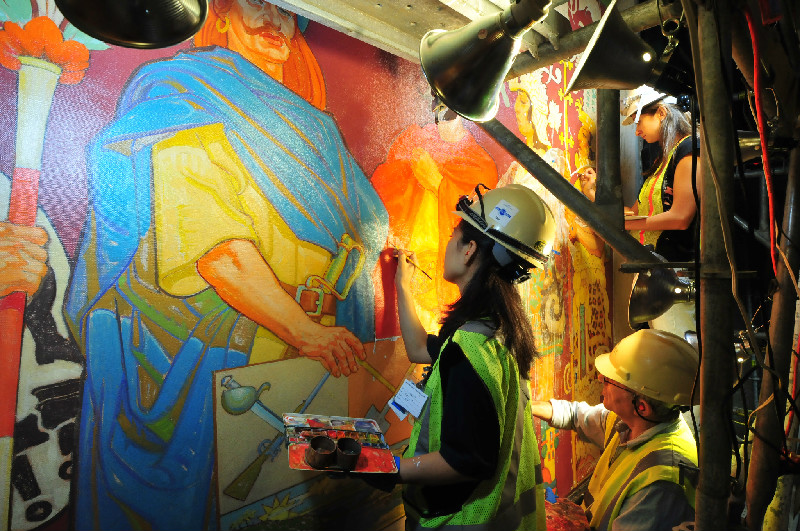
Conservators work on a panel of the mural portraying the building of the Panama Canal, painted by William Andrew MacKay in 1935 for the museum’s Theodore Roosevelt Rotunda. As part of the update, the museum is also unveiling a new Roosevelt statue, never-before-displayed artifacts from the Museum’s collection; videos of American vistas from filmmaker Ken Burns; and interactive exhibits.
Meet the Mammals
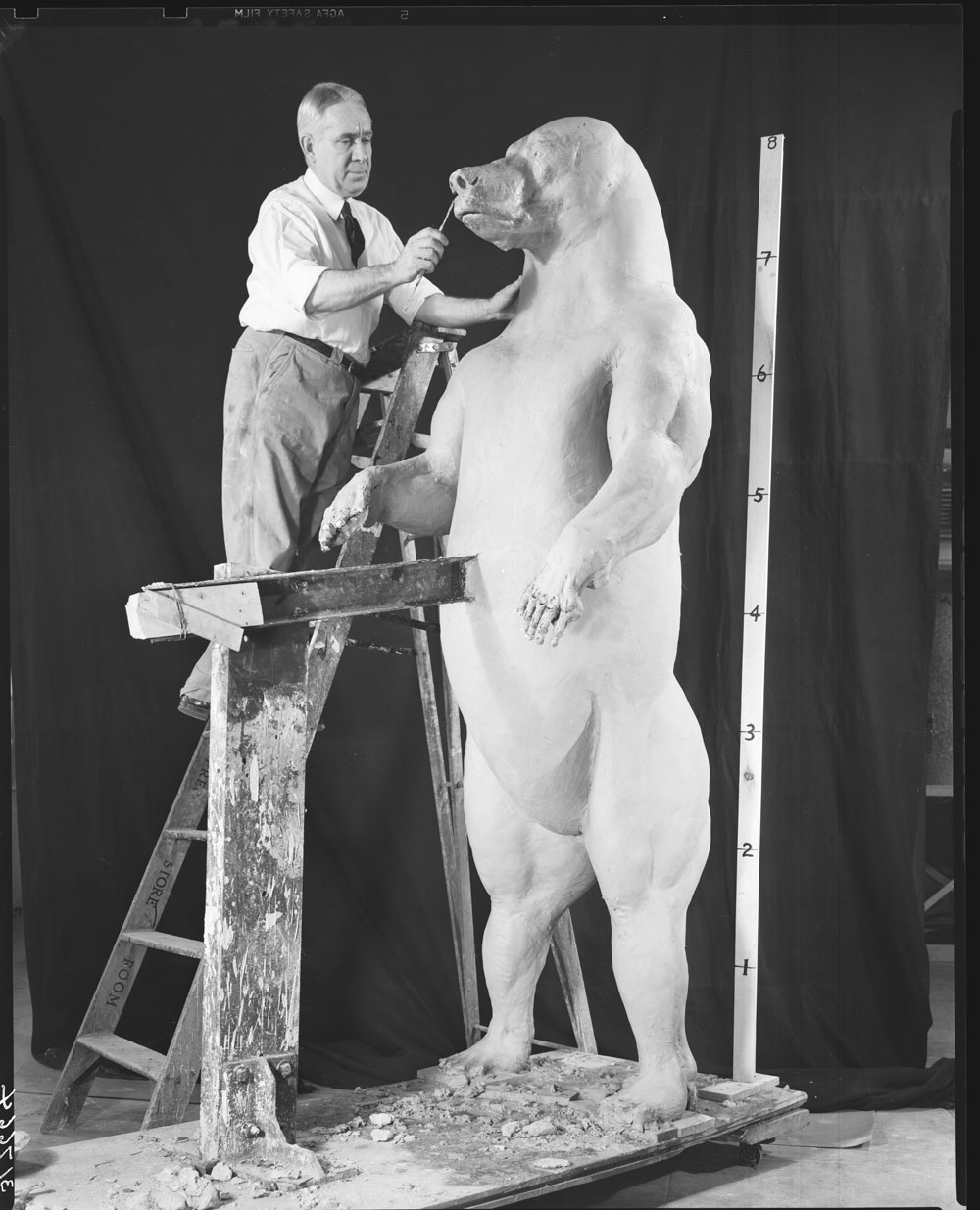
Dioramas in the North American Hall of Mammals, depictions of the natural world Roosevelt helped protect, also received an update. Above, an archival photo shows Robert H. Rockwell at work on a clay model of the Alaska brown bear for the Hall of North American Mammals in 1940.
An Almost-New Bear
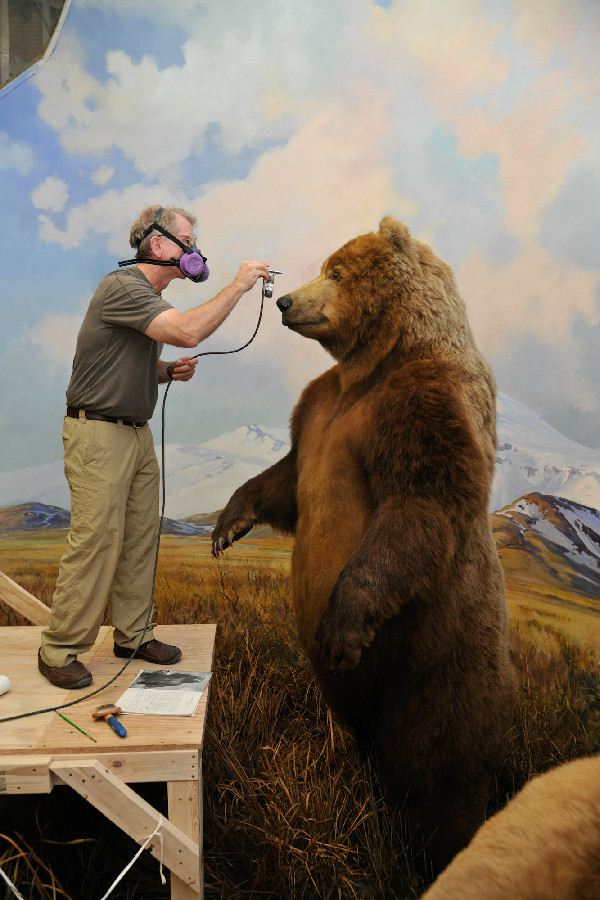
More than half a century later, museum artist Stephen C. Quinn applies dye to the Alaska brown bear in Hall of North American Mammals.
Election Season 1904
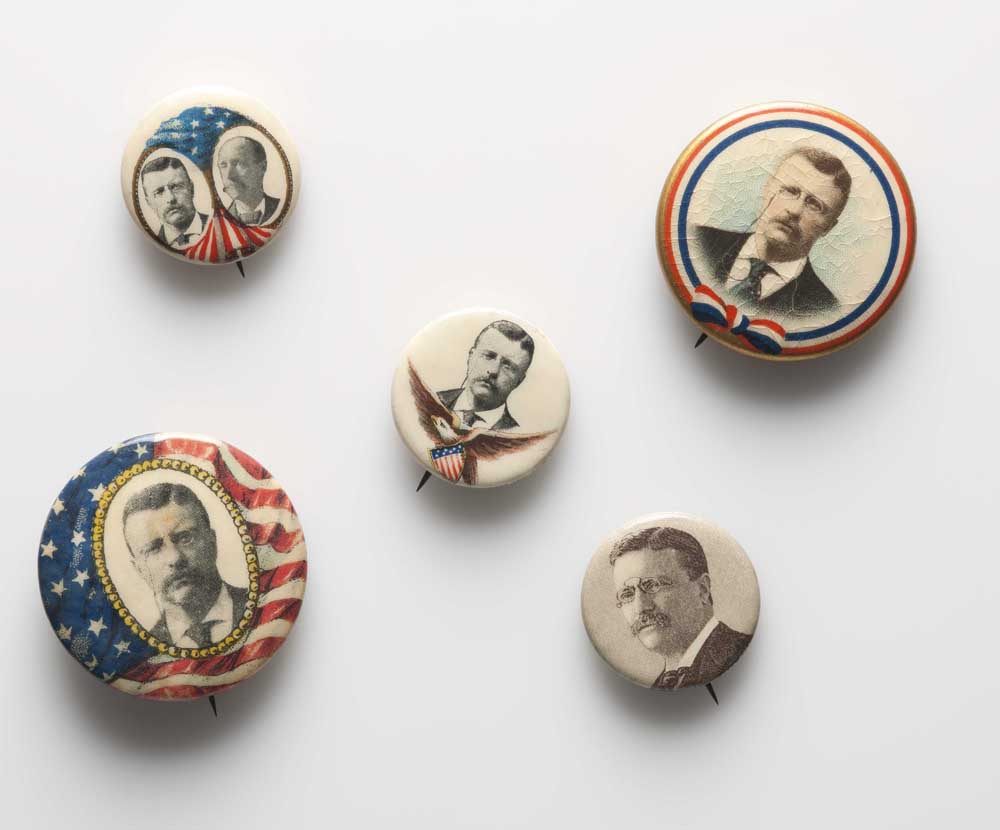
Roosevelt became the 26th U.S. president in 1901 after William McKinley was assassinated. Roosevelt was 42 years old at the time, making him youngest President in U.S. history. He easily won re-election in 1904. After a term away from office, he ran again with his own party, the Bull Moose Party, in 1912 but was not re-elected.
His Own Specimens
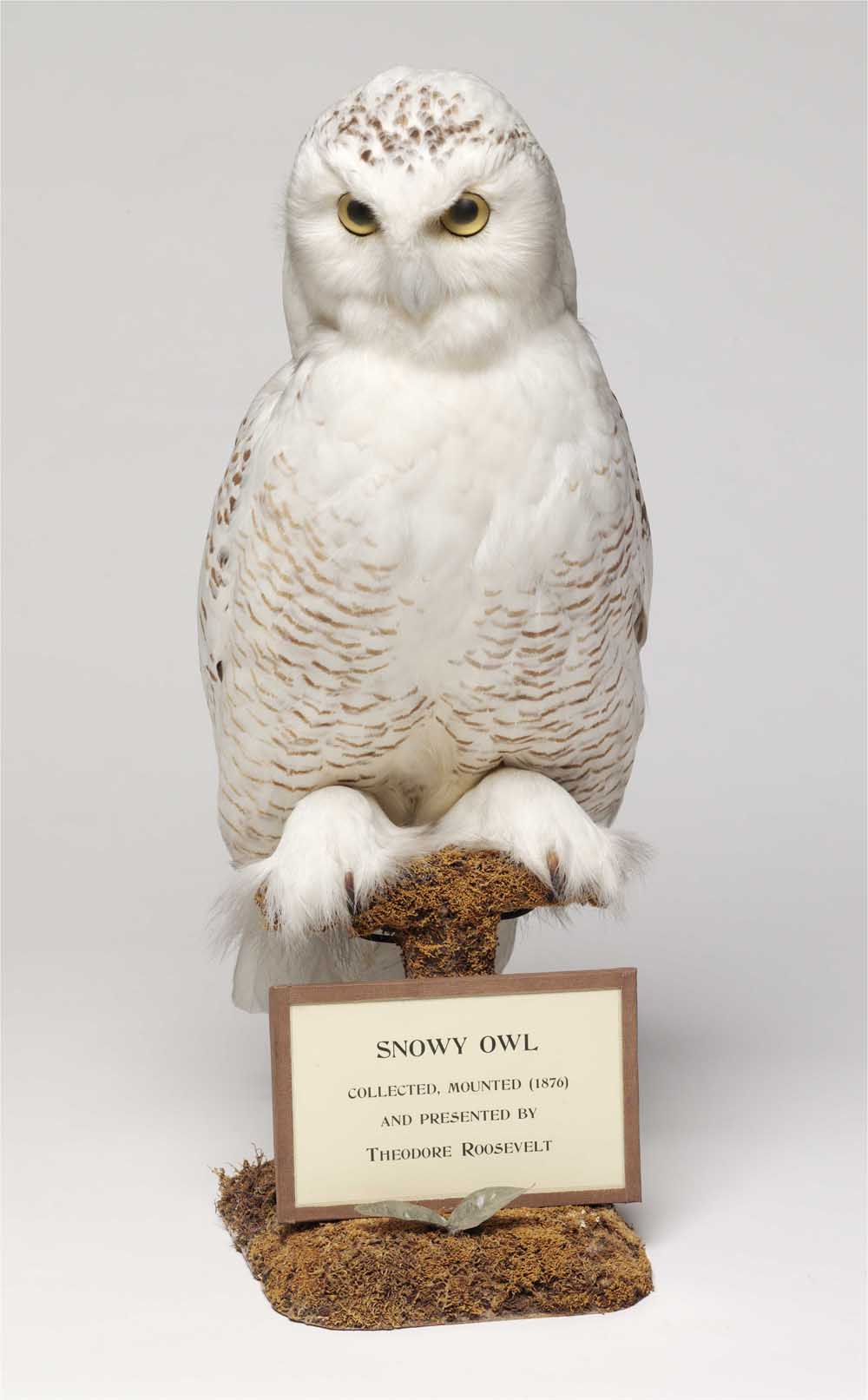
Roosevelt, an avid bird watcher and hunter, collected this snowy owl in Oyster Bay, New York in 1876. The young Roosevelt, who studied taxidermy, mounted it himself.
Collecting Trips
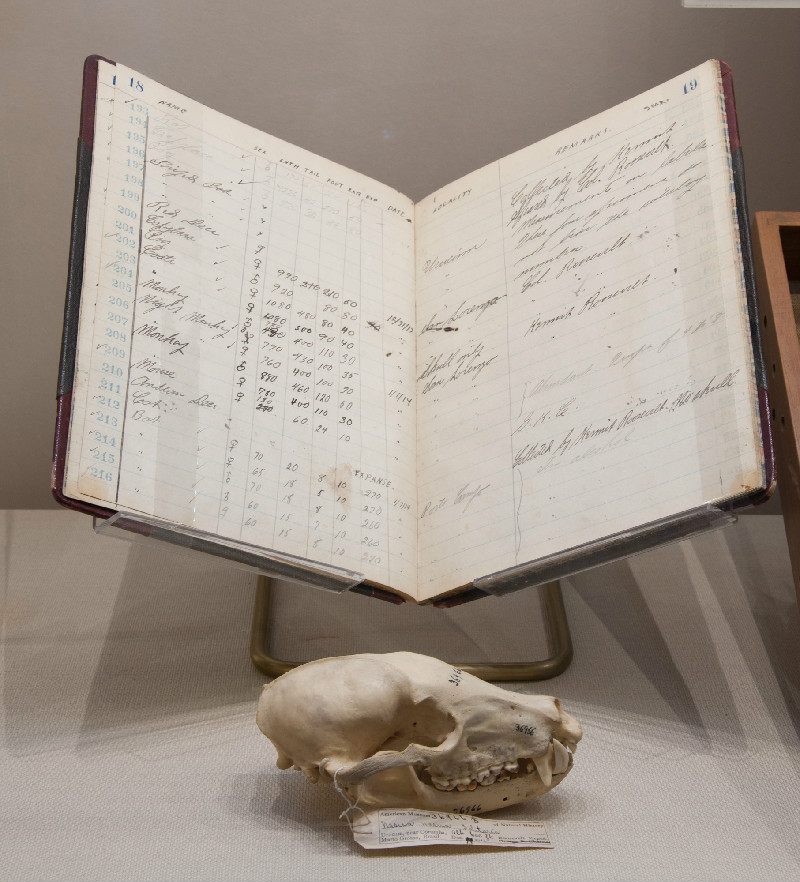
Roosevelt had a long-standing relationship with the museum. One of it’s mammalogists, Leo Miller, collected specimens with Roosevelt and recorded them in this logbook from 1913 to 1914, after Roosevelt’s presidency. Miller brought a skull like this one, which belongs to a coati, a raccoonlike animal from Central and South America, back from a trip.
Sign up for the Live Science daily newsletter now
Get the world’s most fascinating discoveries delivered straight to your inbox.
Roosevelt’s Ranch
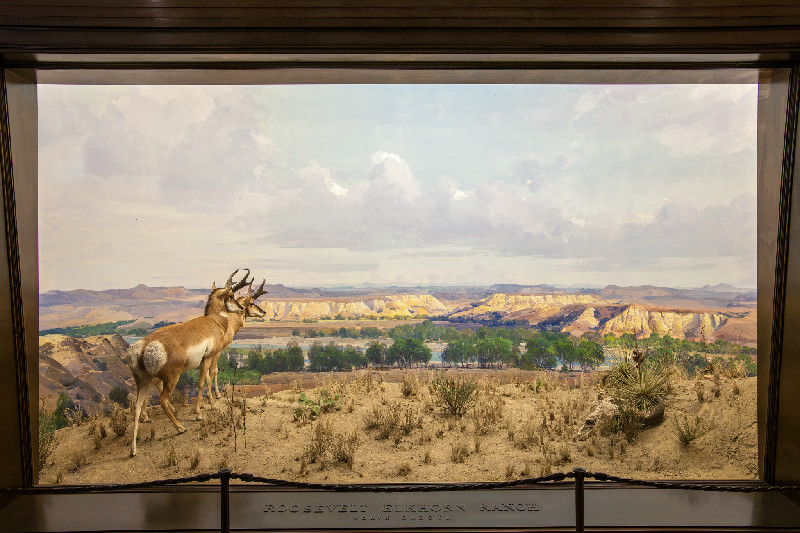
This diorama shows pronghorns overlooking Roosevelt’s Elkhorn Ranch in the North Dakota’s Badlands. This ranch, shown at the diorama’s center, has been called the “Walden Pond of the West.”
Roosevelt the Cowboy
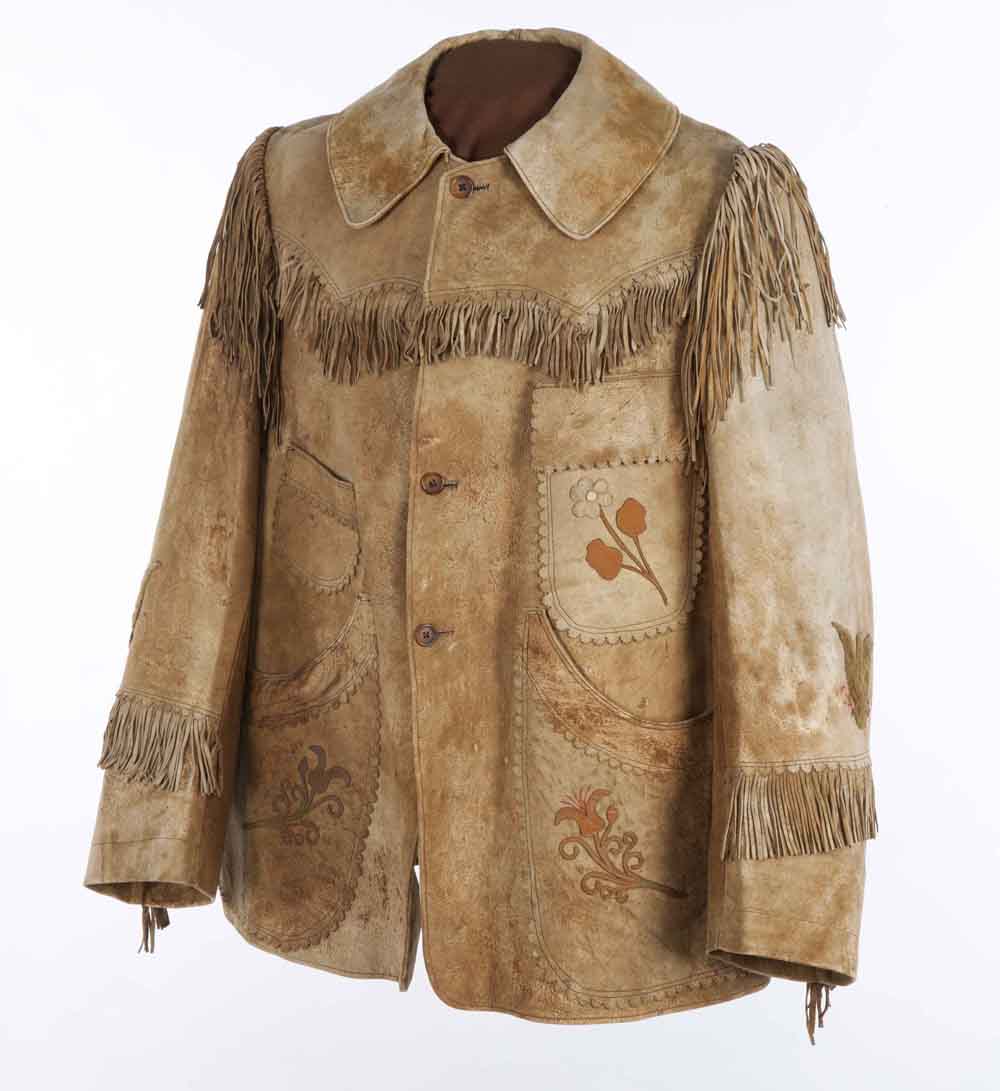
Roosevelt’s fringed buckskin tunic or hunting shirt shown here was hardly worn, and may have been intended for show. Roosevelt cherished his time in the West and considered himself a cowboy at heart, according to the museum.
Creating Shadows for Wolves
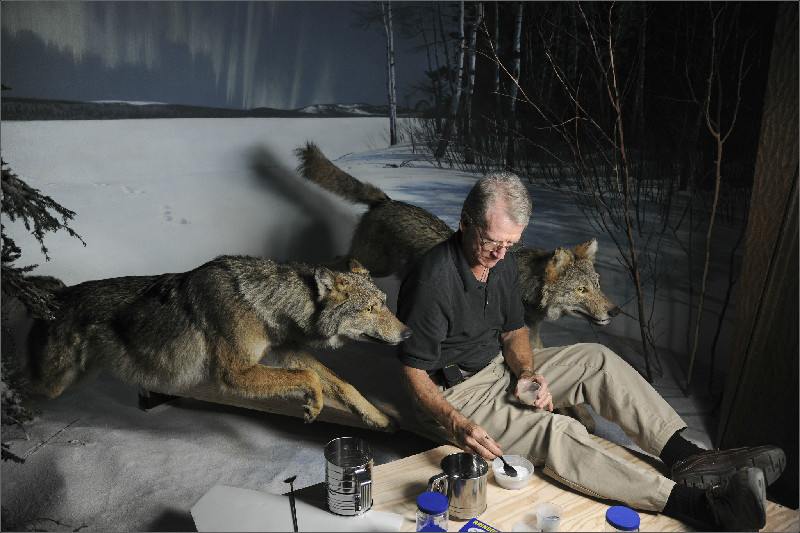
The addition of new, energy-efficient lights to the wolf diorama caused a problem: Their shadows that didn’t match the setting of a moonlit December night on the southern shore of Gunflint Lake in northern Minnesota. Museum artist Stephen C. Quinn mixes pigments to re-create the illusion of shadows on snow.
Wolves, Up-to-Date
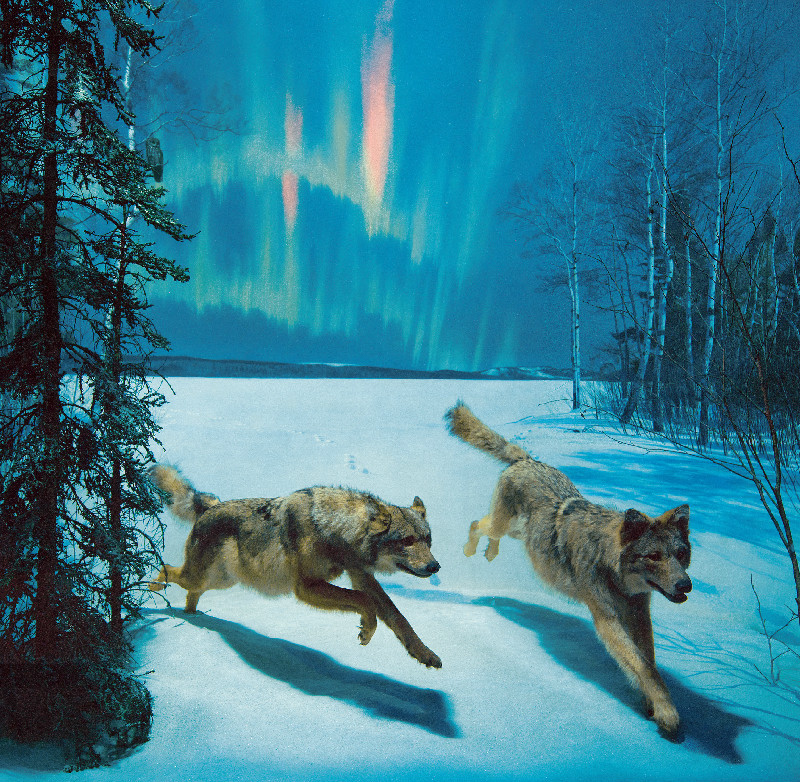
The fully restored wolf diorama.










